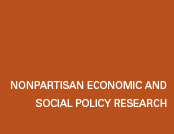| Contact: |
Susan Brown (202) 261-5702 |
| |
Renu Shukla (202) 261-5278 |
WASHINGTON, D.C.—The rural poverty being created today through immigration is fundamentally different from that of the past and far more diffficult to combat, say the authors of a new Urban Institute Press book, Poverty amid Prosperity: Immigration and the Changing Face of Rural California. It is occurring within the context of agricultural prosperity and against the backdrop of anti-immigration sentiment. It also is being sustained by poverty in rural Mexico and fueled by expanding family and native village networks.
From Sojourner to Settler
Low-paid migrant workers who once shuttled back and forth between seasonal jobs in the United States and their homes in Mexico and other Latin American countries are now opting to settle in the towns surrounding California's farms. They crowd into rural colonias—incorporated towns resembling overgrown labor camps— whose populations during the harvest season often surge to several times their off-season size.
The result: California's rural colonias now comprise seven of the 20 U.S. cities in which the highest percentage of people living in concentrated poverty are foreign born.
The book's authors, University of California (at Davis) economists J. Edward Taylor and Philip L. Martin and Urban Institute immigration expert Michael Fix, paint a picture of a rural economy in which many of the economic benefits of agricultural expansion do not accrue to the towns and cities where these migrants settle. "The wages of these newcomers are too low to sustain mainstream businesses, and their public service needs are too high to be absorbed by the local governments," said Phil Martin. Indeed, the costs that labor-intensive agriculture impose on rural California towns chould be viewed as a subsidy to this expanding farm industry.
Factors Influencing Policy Responses
"These trends raise anew public policy issues that range from ensuring the availability of a seasonal labor force to restricting illegal immigration, to devising strategies that more speedily integrate farm workers and their families," added coauthor Michael Fix. Addressing these issues, Fix says, requires taking into account four factors, all treated extensively in the book:
- First, the level and composition of current immigration flows from Mexico are likely to continue, since immigration networks are expanding to supply low-skilled farm workers to this booming sector.
- Second, the children of these farm laborers are themselves becoming integrated into mainstream America, a fact that is ironically reinforcing growers' assertions that U.S. workers will not do farm work so the only option is to import new workers.
- Third, public resources—in particular federal aid—to help integrate these workers are declining, even as the number in need is increasing.
- Fourth, the bi-national labor market is so well established between rural Mexico and rural California that the failure of the United States to promote rural development in Mexico will inevitably require launching such efforts at home.
Focus and Structure of Book
Poverty amid Prosperity synthesizes the views of California's preeminent rural development researchers on how immigration is transforming rural communities. It is based on a series of papers prepared by leading academic and policy researchers, community leaders, and activists who met several times over two years to consider how immigration is affecting communities in three California regions: the San Joaquin Valley (the heartland of California agriculture); the Central Coast; and Southern California. It also is based on an analysis of a unique underclass database developed by the Urban Institute that permits the monitoring of poverty trends for individual census tracts over time.
The first part of the book is a history of immigration patterns and immigrant policies; the second reports and discusses the findings of community fieldwork by researchers who provide a ground-level view of demographic, social, economic, and political changes related to immigration in seven rural towns: Farmesville, Fresno, Guadalupe, Madera, McFarland, Parlier, and Shandon. The final section explores immigrant or integration policies, drawing from the findings on immigration patterns, impacts, and community studies reported in the first two parts of the book.
Poverty amid Prosperity: Immigration and the Changing Face of Rural California, by J. Edward Taylor, Philip L. Martin, and Michael Fix, October 1997, 125 pages; cloth, ISBN 0-87766-669-5, $39.00; paper, ISBN 0-87766-670-9, $21.50. Available from the Urban Institute Publications Office, please call (202) 857-8687.
The nonpartisan Urban Institute publishes studies, reports, and books on timely topics worthy of public consideration. The views expressed are those of the authors and should not be attributed to the Urban Institute, its trustees, or its funders.
Usage, posting and reprint of materials on the UI web site:
Most publications may be downloaded free of charge from the web site in PDF format. This information may be used and copies made for research, academic, policy or other non-commercial purposes. Proper attribution is required.
Copyright of the written materials contained within the Urban Institute website is owned or controlled by the Urban Institute. Posting UI research papers on other websites is permitted subject to prior approval from the Urban Institute—contact paffairs@urban.org.
If you are unable to access or print the PDF document please contact us or call the Publications Office at (202) 261-5687.

